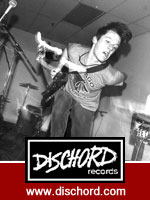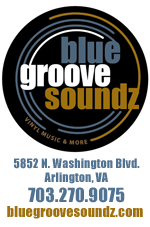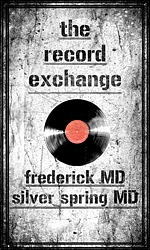
Before it was so rudely interrupted, Bob Dylan’s annual touring regimen took on a recurring pattern, playing the same towns the same times of the year. His last time in Washington, DC was the first week of December 2019. The final show in that leg of the campaign that he never called the Never Ending Tour looked like it may well have served as his last live performance ever as the pandemic raged on, closing venues for more than a year and a half, wiping out touring schedules for more than a year as Dylan, deserving a break after so many years of service, was entering his ninth decade.
But a brief month-long tour materialized despite all odds (and during a brief clearing in the gloom of Covid variants) and here was Dylan, back in DC at the Anthem during the first week of December 2021 closing the latest leg of his tour, selling out the place at 80.

With the latest handful of subtle but tasty musicians behind him, Dylan emerged from the shadows a couple of minutes before the 8 o’clock start time, suggesting an early bird special. The ensemble remained in shadows or silhouette for much of the show, which depended on dim footlights and illumination of the curtain folds behind them.
And when they all shambled to a start on an unrecognizable “Watching the River Flow,” it seemed like Dylan, behind a big upright piano, was sputtering to keep up, the river’s flow having gotten away from him. His voice was a froggy growl, as if frayed at the end of the tour, the timing all wrong. Things didn’t much improve on the next song announcing his intention to forge his own direction despite expectations, “Most Likely You Go Your Way And I’ll Go Mine.”
It seemed like it was going to be a long night.
But then he abandoned the piano, took a microphone to crouch and face the crowd and really lay his cards on the table, using language from Whitman on a stellar “I Contain Multitudes.”
It was the first of what would be eight songs from his remarkable pandemic-era album that came out last year, Rough and Rowdy Ways. And while that numeric fact wasn’t a surprise—he had been doing an identical 17-song set list throughout the tour—it is remarkable that he’s doing so much from an album so recent. Usually, it would take him months to work new material into his evolving sets. Downtime from the pandemic has paid off in not only recording these fascinating late period tracks, but also in learning and performing all of them.
His enthusiasm for the material is shown by coming out from behind that upright piano to deliver most of them solo on a microphone—at least for the first verse or so. Then he’d scurry back to the piano to get back for the solos.
And his delivery of them is completely different than the catalog songs he growls and dashes off to sometimes crazy new arrangements. Only now am I realizing that Dylan has control over his voice such that if he wants to deliver an exacting croon, as he does on the night’s only cover song, “Melancholy Mood,” he does so, only choosing the gargling gravel sound on the oldies.
The Rough and Rowdy songs by and large are, despite the album title, subtle, quiet tone poems, on which he perfectly enunciates his reveries, world-weary declarations, and beat doggerel such that audiences can react to them anew, laugh at their jokes, appreciate the cultural shoutouts, or just admire their simple wordplay.
In deference to Dylan’s own measured, hushed delivery the mindful band gets quieter and quieter behind him, their sonic retreat intensifying the delivery and making the audience absolutely rapt to what’s being said. Rarely have you witnessed a venue so large filled with many who were maybe seeing their first concert in nearly two years, or being with friends in such a setting, so very hushed. To intensify the quiet, even the side bars of the club were closed.
It all brought to mind how audiences would hold their breath and hang on every word when the young, solo acoustic Bob Dylan was first appearing in places like Carnegie Hall. That he still has that power over an audience 60 years later is astonishing.
Still not exactly chatty, Dylan still broke through halfway during the performance to thank the audience and express how happy they were to be in DC, though he still wasn’t sure of the exact locale. “Is this Foggy Bottom?” he asked, possibly joking about the smoke effects on stage.
Before he introduced the band at the end, he spoke of what he knew of the arcane history of the region, mentioning Pentagon City, the DC bluegrass stalwarts the Country Gentlemen and the Mayflower Hotel, where J. Edgar Hoover purportedly ate dinner every night.
There was a glee and a spring to his movements, though he still tended to retreat to that odd upright piano—why not a grand?—where he’d plunk out those repetitive triangular patterns he used to use when he’d take guitar solos (and no, he doesn’t touch a guitar any more). And when he occasionally sat there, he’d disappear entirely to much of the crowd. More striking visually is when he sat down on the drum riser for the musical intro to “Melancholy Mood,” showing a rare vulnerability before an audience who largely sat for the entire 95-minute show. Or maybe he was just setting the mood.
It was a slightly different band from the last time he was on the road, with half the people that back him on Rough and Rowdy Ways. (And completely different from the acoustic ensemble that backed him on his pay-per-view Shadow Kingdom which featured no drums).
On this month-long, 21-date leg, drummer Charley Drayton and guitarist Doug Lancio join lead guitarist Bob Britt, who barely allows himself a solo, multi-instrumentalist Donnie Herron, and the solid bassist Tony Garnier, who’s been the mainstay and unstated musical director for more than 30 years.
Throughout, the unflashy quintet hones close to the recorded sound of the new stuff in their restraint. And by tour’s end have mastered the always surprising variations of the old songs.
And believe me, at times the music and what we knew of the old songs identifiable only from their lyrics, diverged so much it sounded like competing radio stations. “When I Paint My Masterpiece” became an agreeable country swing with an blues undertow with Herron on fiddle. But “I’ll Be Your Baby Tonight” came amid a twangy riff out of “Treat Her Right.” “To Be Alone With You” was now a terse dosey-do; “Gotta Serve Somebody” was given riffs that could have easily segued into the “Batman” theme. Wild.
Yet the band never rocked out as they have in the past; even a bluesy staple like “Early Roman Kings” was constrained. It was the only thing from the 2012’s Tempest that formerly dominated his shows in recent years. More than that, the song selection from his catalog only went back to “Most Likely You Go Your Way and I’ll Go Mine” from Blonde on Blonde, eliminating the entirety of his significant, pre-electric folk output.
It was ironic, since the rapt attention he easily attained in the room could certainly have served those classics well. But his intentional, perfectly-phrased nearly spoken word reveries were spellbinding, bringing to mind the late period shows from fellow ’60s poet Leonard Cohen.
Dylan clearly still has a lot to say and is still sufficiently energized to take stages to deliver them, which certainly portends well for 2022 and beyond.
SETLIST
Watching the River Flow
Most Likely You Go Your Way And I’ll Go Mine
I Contain Multitudes
False Prophet
When I Paint My Masterpiece
Black Rider
I’ll Be Your Baby Tonight
My Own Version of You
Early Roman Kings
To Be Alone With You
Key West (Philosopher Pirate)
Gotta Serve Somebody
I’ve Made Up My Mind to Give Myself to You
Melancholy Mood
Mother of Muses
Goodbye Jimmy Reed
Every Grain of Sand













